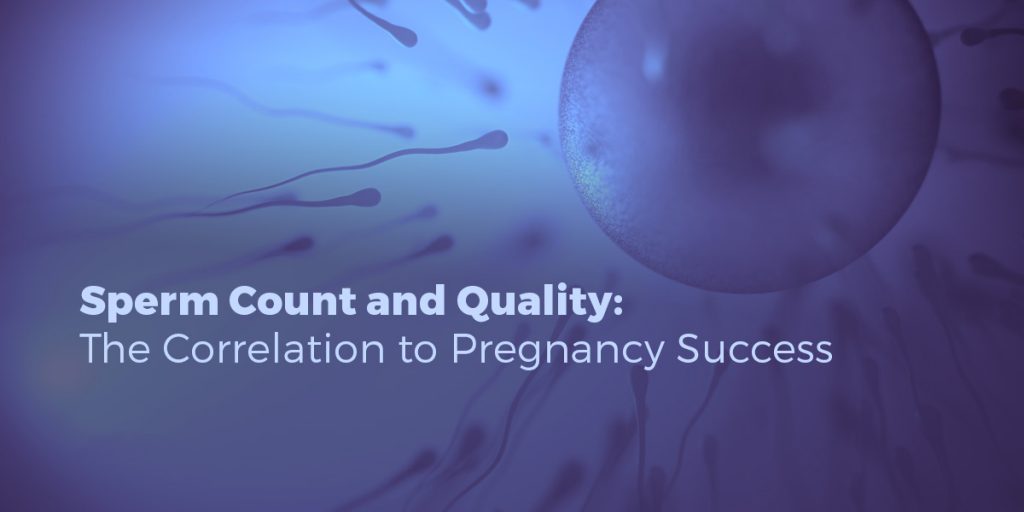
Male infertility accounts for at least a third of infertility cases. In an additional third, problems with both the man and the woman play a role. In most cases, male infertility is due to issues with the sperm, such as low sperm count or poor sperm quality. In about 10-15% of men, there is no sperm at all in his semen. And unfortunately, there are few outward signs of sperm issues.
Most men don’t know they’re infertile until they struggle to get a partner pregnant. Here’s what you need to know about sperm count and quality, and its correlation with pregnancy success.
Sperm Count and Quality: The Basics
For a man to impregnate his partner, healthy sperm must fertilize the egg. The egg must then travel to the uterus and implant itself in the lining. While the man’s job is done after fertilization, issues with sperm can affect every aspect of pregnancy and fertility. For example, genetic mutations on sperm may increase the risk of miscarriage, or make it more difficult for an egg to implant in the uterus. In most cases, however, the primary way sperm affects fertility is via fertilization. Issues with sperm make it much more difficult for sperm to fertilize an egg.
The simplest way to assess sperm volume and quality is via a semen analysis. This is a simple test that only requires a man to ejaculate into a cup. A lab can then analyze the semen and the sperm it contains. A semen analysis reveals a lot about a man’s fertility.
Your doctor will pay careful attention to:
- Sperm count/concentration: Sperm count is a measure of how many sperms are present in each milliliter of semen. A healthy sperm count is 15 million or higher. While it’s possible to impregnate a partner with lower numbers, a lower sperm count makes it more difficult for sperm to travel to the egg. Some men have no sperm in their semen, which makes pregnancy impossible.
- Sperm motility: Sperm motility is a measure of your sperm’s ability to move and swim. In a healthy semen sample, 50% or more sperm are active. When this percentage lowers, the odds of successfully swimming to the egg diminish.
- Sperm morphology: Morphology is a measure of how healthy your sperm look — whether they are shaped normally, and of typical size. Normal semen should contain at least 4% normal shaped sperm.
- Semen volume: The amount of semen a man produces can affect fertility. Men who produce very little semen also produce less sperm — and fewer healthy sperm — each time they ejaculate. Healthy ejaculation should contain at least 1.5 milliliters — roughly half a teaspoon. Anything less could point to a problem with the prostate, meaning that the body is not manufacturing sufficient semen, or possibly that there is a blockage in the seminal vesicles.
- Semen liquefaction: This is a measure of how long before semen becomes liquified. Healthy semen comes out thick, then slowly liquefies. Liquefaction should take about 20 minutes. If it takes longer or does not liquefy, it could be a sign of a problem.
- Chemical composition of semen: Your doctor will assess the pH of the sperm, which is a measure of its acidity. Healthy pH is between 7.1 and 8.0. Low pH means the semen is acidic, while a higher pH means the semen is too alkaline. In either scenario, the change in pH may decrease the chances of pregnancy, or make it more difficult for sperm to move. Your doctor will also look at other chemical components of sperm, such as fructose. Healthy seminal vesicles produce fructose. Low or no fructose may mean there is an obstruction somewhere.
Your doctor should discuss the meaning of each variable, and be able to answer questions about how each factor influences the chances of a successful pregnancy. For example, a moderately low sperm count in an otherwise healthy man might not explain infertility or might make pregnancy take longer to achieve. But very few or no sperm may completely eliminate the chances of a pregnancy.
